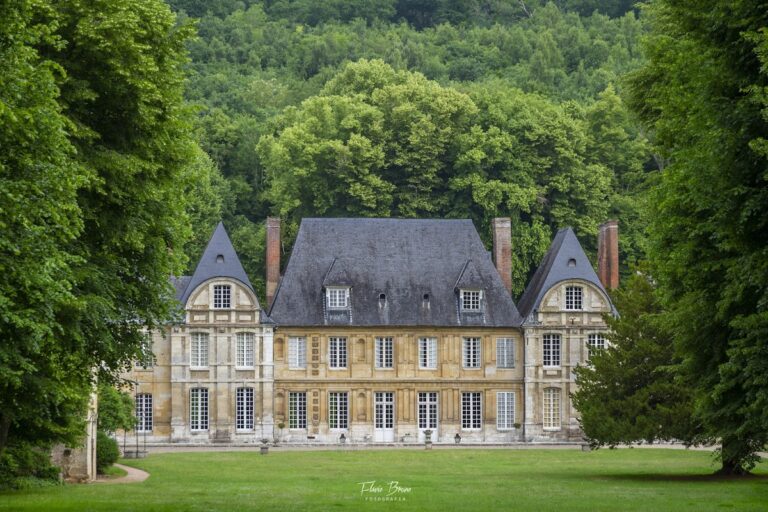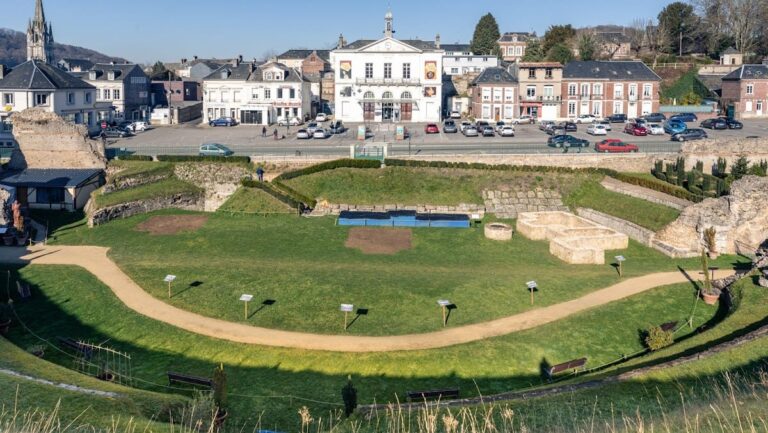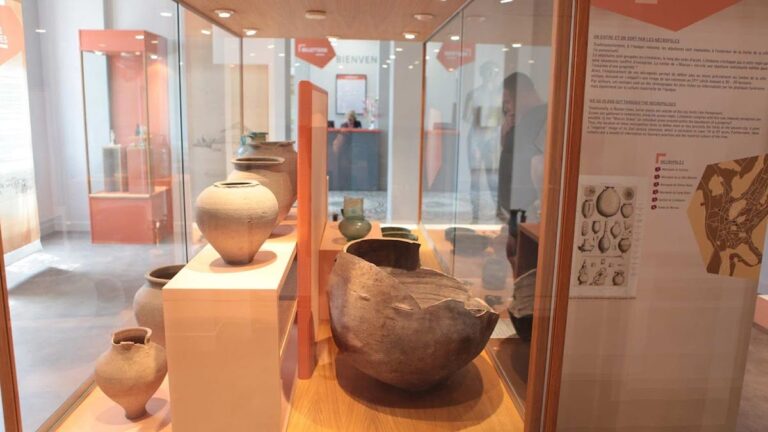Château de Robert-le-Diable: A Medieval Fortress in Normandy, France
Visitor Information
Google Rating: 4
Popularity: Low
Google Maps: View on Google Maps
Official Website: www.chateauderobertlediable.fr
Country: France
Civilization: Medieval European
Remains: Military
History
The Château de Robert-le-Diable is a medieval fortress situated in the commune of Moulineaux in France. It was constructed by the Normans during the late 10th to 12th centuries, serving as a stronghold within the region now known as Normandy.
Originally named after the legendary figure “Robert the Devil,” the castle’s appellation has been linked to either Robert II of Bellême or Robert the Magnificent, the Duke of Normandy and father of William the Conqueror. However, no direct proof associates either individual with the castle’s building or early use. Its strategic position atop a cliff overlooking the left bank of the Seine allowed control over the river’s split course and surveillance across the Rouen area.
In the early 13th century, around 1200 to 1203, King John of England, also called Jean sans Terre, is credited with constructing or significantly enlarging the castle. This reflects the period’s Anglo-Norman conflicts and territorial interests. Throughout the Hundred Years’ War, the local population of Rouen took defensive measures by destroying the castle’s towers to prevent the English from occupying it, demonstrating the ongoing military significance of the site.
During the 19th century, particularly in 1855, the castle’s defensive ditches, originally designed as moats, were mostly filled in. An early 20th-century restoration took place between 1903 and 1905 under Lucien Lefort. He was influenced by Viollet-le-Duc, a well-known restorer of medieval monuments, and was commissioned by Oscar Cosserat, then the castle owner.
In the mid-20th century, the castle was acquired and restored by Roger Parment, mayor of Moulineaux. He equipped the site with medieval artifacts, life-size historical figures, and a Viking ship replica built in a Norwegian style. These additions created a historical display aimed at education and cultural preservation. The site remained accessible until the early 21st century. On 26 May 2007, a fire severely damaged the north tower known as the “Rouen tower,” particularly destroying its wooden floors. Subsequently, ownership transferred from the Cosserat family to the public community of Rouen, which initiated a substantial restoration program to reopen the castle grounds.
The Château de Robert-le-Diable has been officially recognized since 1935 as a protected site covering over 48 hectares. It is also listed in France’s general inventory of cultural heritage, acknowledging its historical and archaeological value.
Remains
Perched on a steep cliff overlooking the Seine River, the ruins of Château de Robert-le-Diable command a sweeping view of the river’s two branches and surrounding lands, underscoring its original defensive purpose. The castle complex was surrounded by deep ditches, also known as moats, designed to impede attackers. Most of these moats, however, were filled in during the mid-19th century, altering the original defensive landscape.
The structural remains include substantial ruins of stone walls and foundations, reflecting fortress construction techniques from the late medieval period. Among these remnants stands the notable main tower, referred to as the “Rouen tower,” which sustained significant damage during the 2007 fire that destroyed its wooden floors. The tower’s stones remain in place, but it now exists in a partially ruined state, echoing the castle’s turbulent history.
The early 20th-century restoration guided by Lucien Lefort introduced conservation touches in line with the philosophies of Viollet-le-Duc. This work helped stabilize portions of the structure while respecting the original medieval fabric. Within the castle grounds, roving installations once included a full-sized Norwegian-style Viking ship replica, replicating maritime technology from the Viking Age, along with life-size figures representing medieval characters. These served as educational tools reflecting the heritage of Norman history and culture.
Today, visitors to the site can access the castle’s former moat areas and the central courtyard. While the main buildings remain incomplete ruins, the grounds retain a tangible connection to their historical past. Conservation efforts continue to maintain the castle’s stone remains and their position amid the dramatic river landscape, preserving this important vestige of Norman medieval fortification.










